Enhance your pickleball skills with faster reaction times. Boost your gameplay and keep your opponents guessing.
Learn easy and practical tips to use in your next match.
Get ready to upgrade your performance on the court by learning how to improve reaction time in pickleball here to become a quicker, more alert player.
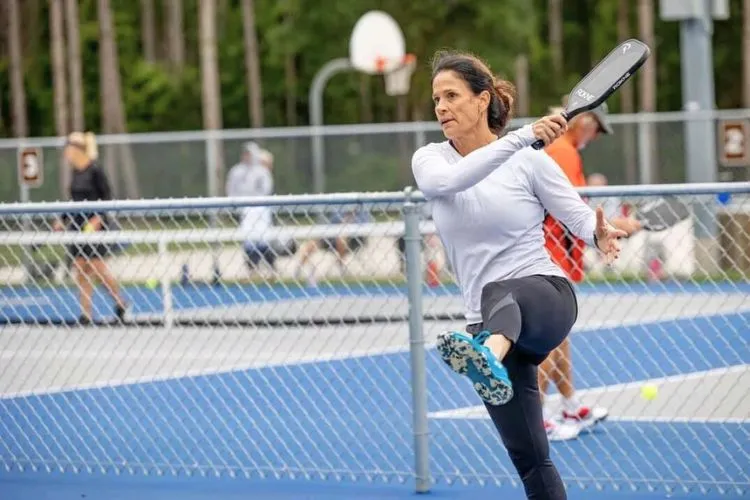
Master techniques that can make a world of difference. Stay ahead in the game and make winning look effortless.
Your journey to being an unstoppable force begins here.
How to improve reaction time in pickleball?
Ready to level up your game of pickleball? This guide will coach you in perfecting your reaction time on the court.
As reaction time serves as a crucial aspect of pickleball, mastering it lends players a competitive advantage. Let’s explore how.
Comprehending Reaction Time
At its core, pickleball demands quick response times. Quick reaction is valuable, it helps you respond with precision and speed to your opponent’s moves. Thus, ensuring more control and improving your winning chances.
Train Your Body for Speed and Agility
Training your body to move quicker is key in reducing reaction times.
- High-Intensity Interval Training(HIIT): HIIT routines improve overall speed and endurance. They involve periods of intense exercises, followed by shorter breaks.
- Plyometric Exercises: These workouts target speed and power. The focus of such exercises is on quickly stretching and then shortening muscles, improving muscular power and speed.
Molding Your Mind
Mental preparation has as much impact on your game as physical training
- Visualization: Visualizing various game situations sharpens your mind. This swift mental playback can bolster your game-time reaction time.
- Focus Drills: Focus drills require your attention to be fixed on things for a set amount of time. This nurtures your power to spot the ball and react swiftly during an actual game.
Consistent Practice
Consistent practice is instrumental in improving reflexes. Regular practice with a pickleball paddle helps familiarize your hand with quicker response times.
Wall Ball: Treat a wall as your opponent. This improves not just your aim but also your ability to react quickly.
Choosing the Right Gear
- Lightweight Paddles: Lightweight pickleball paddles offer faster swings. Hence, they could significantly reduce your reaction time on the court. Graphite and composite paddles also provide a balance of power and control.
- Comfortable Shoes: Grip and comfort equate to better balance and speed. Therefore, investing in a pair of high-quality pickleball shoes can provide this advantage.
Analyzing the Ball
Keep your eye fixated on the ball. This simple yet vital strategy assures you are ready to respond to your opponent’s hit quickly.
- Trajectory Spotting: Observing your adversary’s approach to hitting the ball is crucial. Spotting the ball’s trajectory aids in planning your next move and improving reaction time.
- Ball Speed: Pickleball games often see a quick exchange of fast and slow balls. Training to match this changing pace can heighten your reaction speed significantly.
Ready Position
This position is an alert stance that players should ideally adopt before and after every hit during the game. This ensures you’re set to react faster.
Importance of Hydration and Rest
- Hydration: Adequate hydration pre and post-match helps maintain endurance levels, thus ensuring quicker reactions.
- Rest: Rest affects your response to stimuli. Rested players react better and faster than those devoid of sufficient rest.
Calmness Under Pressure
Keeping calm when the game heat’s on is an attribute professional pickleball players swear by. This helps concentrate better, resulting in shorter reaction times.
Taking Away
Mastering fast reaction times in pickleball might seem daunting, but it’s achievable. Regular practice, the right mindset and equipment can unlock your potential.
By following these steps, your reaction time is sure to improve, making you a more formidable player on the court. Remember, practice is key, and every journey starts with the first step.
Start accelerating your pickleball game today by enhancing your reaction time and enjoy a marked improvement on the court!
How does cognitive training improve reaction time?
Cognitive training can significantly improve reaction time in pickleball, especially when applied systematically and consistently.
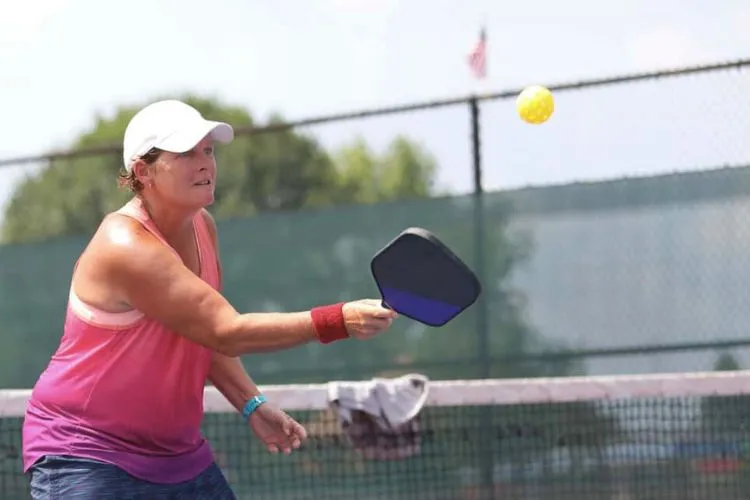
Cognitive Training in Pickleball
Cognitive training, or brain training, enhances mental abilities such as attention, memory, and problem-solving.
These skills are crucial in pickleball, where quick decision-making, anticipation, and hand-eye coordination play an essential role in the player’s performance.
The following sections detail how cognitive training can help improve reaction time in pickleball.
Visualization Techniques
Visualization involves mentally rehearsing specific game scenarios, which enables players to anticipate their opponents’ moves and react faster.
By visualizing potential situations and carefully planning their responses, players can prime their brains for quicker reactions during gameplay.
Focus Drills
Focus drills are designed to strengthen players’ concentration skills, specifically with regard to tracking the ball’s movement and reacting swiftly during matches.
Regular practice of focus drills can boost hand-eye coordination while refining the player’s ability to respond to sudden changes in the game.
Quick Decision-Making Exercises
Pickleball demands continuous decision-making concerning positioning, shots, and overall strategy.
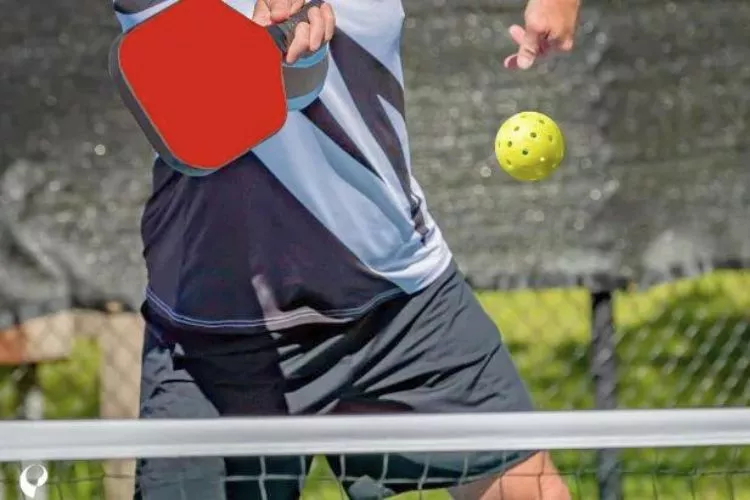
Incorporating exercises that enhance quick decision-making and problem-solving skills can significantly sharpen a player’s reaction time on the court.
By training the brain to rapidly process information and make decisions under pressure, players can improve their in-game performance.
Maintaining a Growth Mindset
A growth mindset—the belief that one’s abilities can be developed through dedication and hard work—can play a pivotal role in cognitive training.
Players who maintain a growth mindset are more likely to see challenges as opportunities to grow and improve.
When it comes to pickleball, having a growth mindset can directly impact reaction time, as players continually push themselves for faster and more effective responses to their opponents’ moves.
Cognitive training is essential in enhancing reaction time in pickleball. By incorporating visualization techniques, focus drills, quick decision-making exercises, and maintaining a growth mindset, players can effectively train their brains to react more efficiently during matches.
This targeted mental training, when combined with consistent practice and dedication, can lead to improved performance on the court.
Role of Stretching and Range of Motion
Stretching is key to prepare the body for pickleball. A good stretch helps to gain flexibility. It aids in better movement.
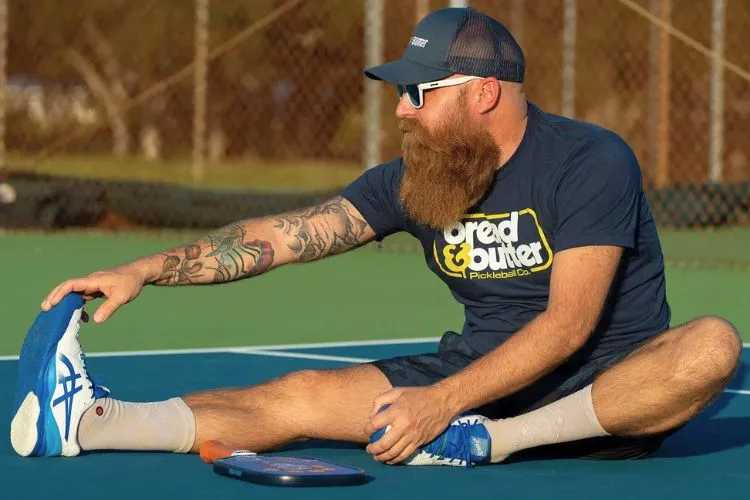
Why Stretching Matters?
Stretching plays a substantial role in sports, especially Pickleball. Regular stretching exercises enhance game performance.
This advantage comes from reduced muscle tension and elevated range of motion (ROM). Stretching exercises make muscles nimble, which aids in efficient movement.
A larger ROM is a critical advantage in Pickleball. It offers a wide sphere of physical response to the player.
Whether it is an unexpected shot or a quick dive, an enhanced ROM permits better returns. It also reduces the chance of injury, thereby fostering sustained good performance.
Stretching and Reaction Time
Stretching aids in muscle elasticity. A stretched muscle is supple and pliable. It is more ready for action and can respond speedier.
Consequently, a player with well-stretched muscles makes defter movements in the field. A sound ROM permits swift reactions during play.
In Pickleball, this can translate to an agile shot in response to an opponent’s serve. Further, by maintaining regular stretching routines, gamers can maintain their quick game reflexes.
Foley’s Method
Foley’s method is worthy of mention in this context. This stretching method is a robust two-pronged approach, primarily concentrated on Pickleball players.
The first part aims at enhancing the player’s ROM. This set of exercises works towards gradually increasing the player’s reach and flexibility.
The expansion can be instrumental in effective gaming, especially in Pickleball, a sport that requires swift response and broad reach.
The second part focuses on engaging the nervous system. These exercises aim to stimulate neural pathways for rapid transmission of nerve impulses.
The outcome is quicker reactions during gameplay. This two-pronged methodology, focusing on physical flexibility and neural stimulation, can significantly enhance performance in Pickleball.
Types of Stretches
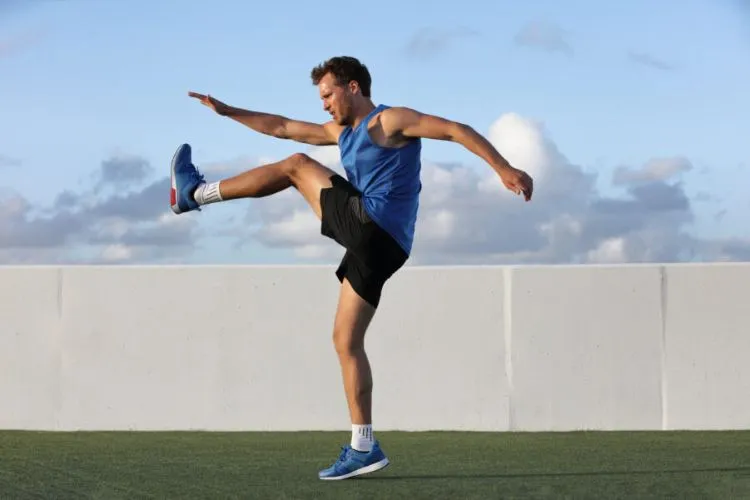
- Static Stretching: These are slow and constant. Hold the stretch for 15-30 seconds.
- Dynamic Stretching: These involve movement. It helps to warm up the muscles.
Stretching Routine
A proper routine can help avoid injury. It boosts your game performance. Before any game, make time to stretch. Start with dynamic stretches.
Right before the game, use static stretches. Post-game, static stretches help cool down. For pickleball players, stretching is crucial. A better ROM leads to quicker reactions. This can help take your game to the next level.
Conclusion:
enhancing reaction time in pickleball involves a combination of physical training and cognitive strengthening.
Techniques like visualization, focus drills, and maintaining a growth mindset can vastly improve mental agility.
Physically, ensuring regular warm-ups, cardio workouts, strength training, and crucially, good stretching routines bolster quicker reactions and swift movements.
Implementing these strategies and maintaining consistency can have a profound impact on your reaction time in pickleball, thereby transforming performance and leading to a more enjoyable and successful gameplay experience.

Pickleball’s more than a game to me—it’s a passion. I write, sharing its highs and lows, the thrills and the lessons. Some tales might draw you to the court, while others give a hint of the game’s magic. So, curious about my journey? Ready to dive deep into the world of pickleball with me? Let’s go.
